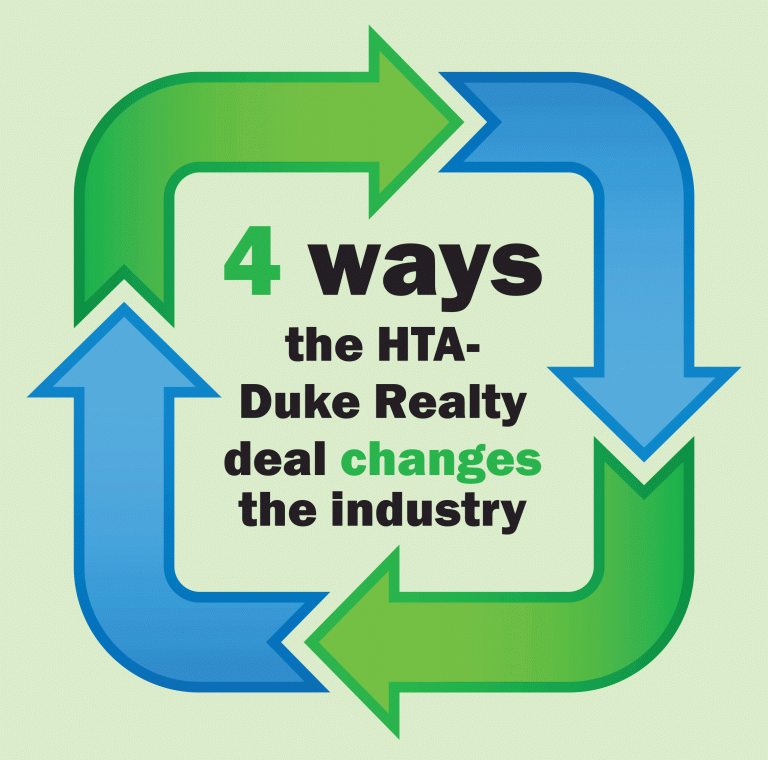The buzz has slowed a bit in the aftermath of the blockbuster healthcare real estate (HRE) deal of 2017, but there are still a few details to be worked out and the transaction is likely to have an ongoing impact on the sector in several ways.
By John B. Mugford
 The deal, of course, has Scottsdale, Ariz.-based Healthcare Trust of America (NYSE: HTA) acquiring almost the entire portfolio – at least those assets that are not acquired by health systems under right of first refusal (ROFR) agreements – of medical office buildings (MOBs) from Indianapolis-based Duke Realty Corp. (NYSE: DRE). Under the transaction, announced May 1, HTA agreed to pay a maximum of $2.75 billion at a capitalization (cap) rate that, until recently, many healthcare real estate (HRE) professionals thought they would never see: sub-5 percent.
The deal, of course, has Scottsdale, Ariz.-based Healthcare Trust of America (NYSE: HTA) acquiring almost the entire portfolio – at least those assets that are not acquired by health systems under right of first refusal (ROFR) agreements – of medical office buildings (MOBs) from Indianapolis-based Duke Realty Corp. (NYSE: DRE). Under the transaction, announced May 1, HTA agreed to pay a maximum of $2.75 billion at a capitalization (cap) rate that, until recently, many healthcare real estate (HRE) professionals thought they would never see: sub-5 percent.
Some have said the cap rate could be as low as 4.75 percent, although HTA officials insist that it is between 5 percent and 5.25 percent, also noting that construction projects included in the sale and some newer MOBs that have yet to be leased up (stabilized) effectively raise the cap rate.
That discrepancy aside, what does the mega deal mean for the HRE sector?
After talking with quite a number of HRE professionals – except those directly involved with Duke Realty Corp. and HTA, who did not return inquiries for interviews – there are some conclusions to be reached. The people we talked with did not want to be named or quoted, as they did not want to speculate publicly because they were not directly involved with the transaction.
Although the HTA-Duke Realty deal could results in changes for the HRE sector, as we will see below, let’s start with what probably will not change. Industry observers say that the transfer of the assets from one major real estate investment trust (REIT) to another probably won’t significantly alter the ownership landscape in the sector – meaning the assets are not likely to be put up for re-sale anytime soon, as most REITs such as Duke Realty and HTA are long-term holders of their properties. Perhaps some of the MOBs could be culled and sold at certain points in time, as REITs occasionally do sell assets for any number of reasons, including disposing of “non-strategic” assets that are outside of markets where they own concentrations of facilities.
But that remains to be seen. So let’s get to the four major changes the transactions has already had – or probably will have – on the HRE space.
Four ways this changes things
The full content of this article is only available to paid subscribers. If you are an active subscriber, please log in. To subscribe, please click here: SUBSCRIBE





